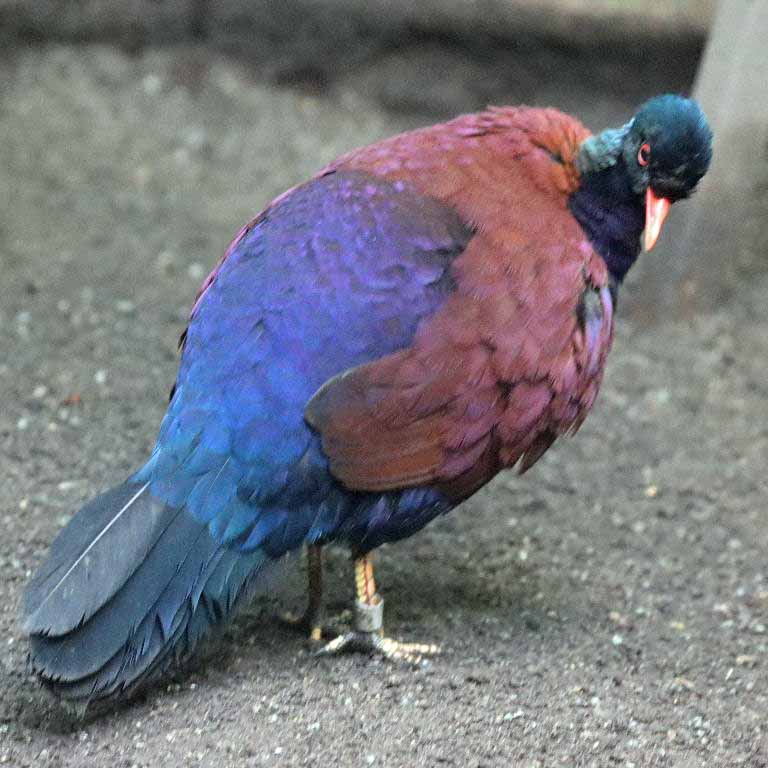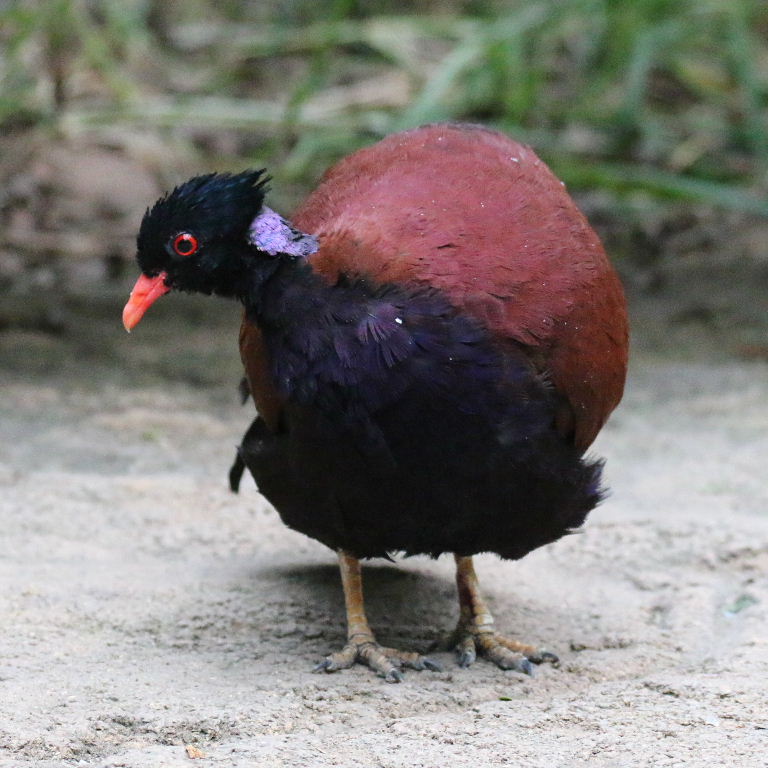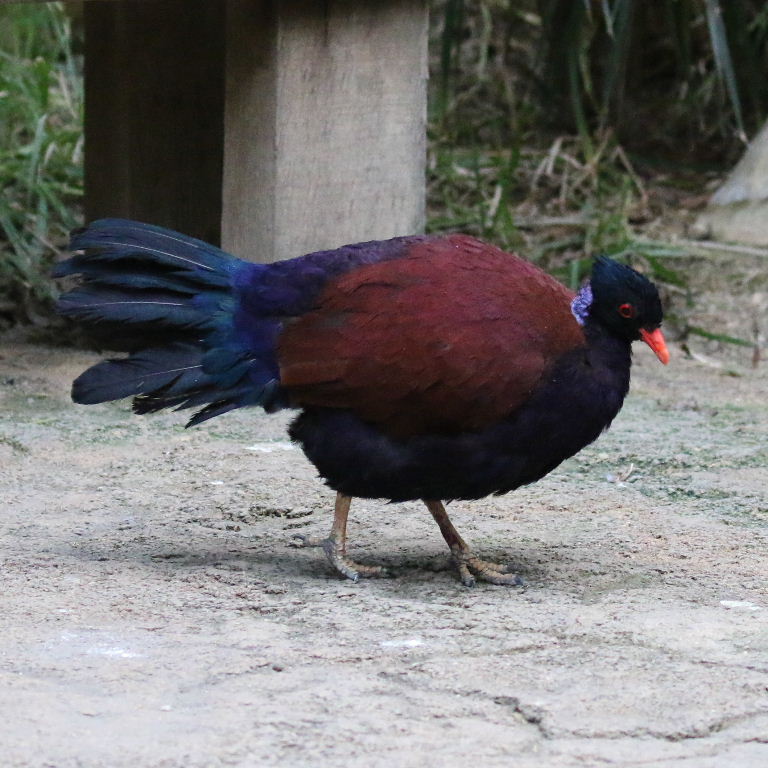Pheasant Pigeon Otidiphaps nobilis (/aruensis)



The Pheasant Pigeon looks like a small pheasant with its long, chicken legs but is actually a large pigeon
- like pigeons the adults feed crop milk to chicks and both parents incubate/raise young.
It is native to New Guinea and adjacent islands where there are no pheasants/partridges so the Pheasant Pigeon, and the larger Crowned Pigeons,
have evolved to fill the niche.



There are four subspecies, sometimes treated as separate species. Shown above is the nominate and more common:
the Green-naped (although in most lights the nape looks more blue). Others are the White-(below), Grey- and Black-naped.



The scientific name "Otidiphaps" is made up of phaps: like the Bronzewing ground pigeons and otidi from a
perceived relationship to Bustards. Oditi would p'haps have been more appropriate.



The White-naped subspecies or species, Otidiphaps (nobilis) aruensis, is native to the Aru Islands off New Guinea. It is in danger
of becoming extinct in the wild.



Pheasant Pigeons are useful dispersers of seeds in the ecosystem.

